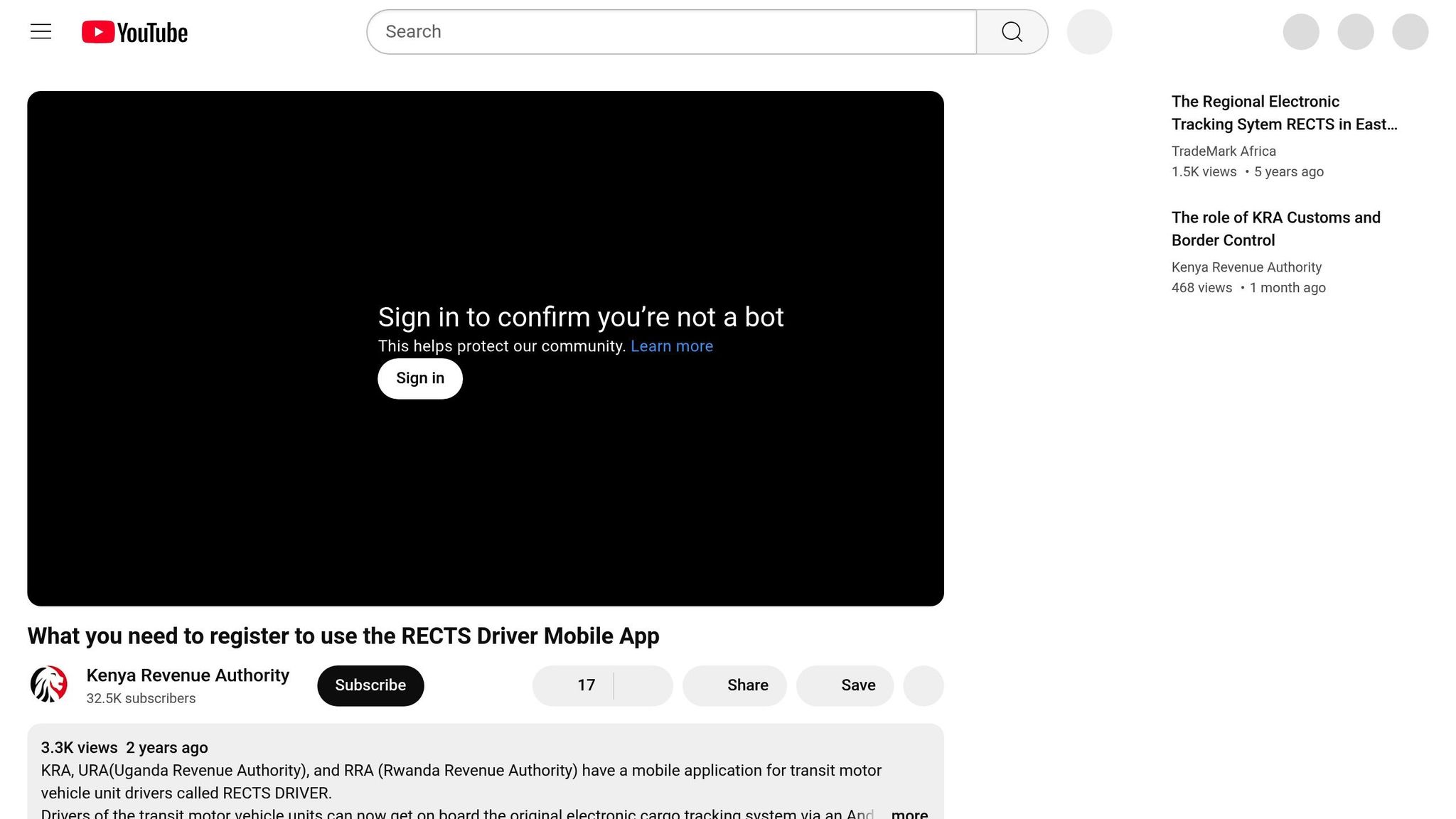If you’re registering a used car in Rwanda, here’s what you need to do:
- Prepare your documents: Gather proof of purchase, import papers (if applicable), insurance, and a roadworthiness certificate.
- Visit the Rwanda Revenue Authority (RRA): Submit your documents, fill out the necessary forms, and pay the registration fees.
- Pass a vehicle inspection: Ensure your car meets safety and emissions standards at an authorized center.
- Collect your plates: Once approved, pick up your license plates and registration card.
Key Documents Checklist:
- Sales documents: Original sales invoice and sale agreement.
- Import papers (for imported vehicles): Import declaration form, bill of lading, certificate of origin, and customs clearance documents.
- Additional papers: Roadworthiness certificate and insurance certificate.
Using the RRA’s online platform can save time by letting you pre-submit documents, schedule inspections, and track your application. Arrive early at RRA offices or inspection centers to avoid delays, and double-check your paperwork to ensure a smooth process.
What you need to register to use the RECTS Driver Mobile App

Documents Needed for Registration
To register your used car with the Rwanda Revenue Authority (RRA), you’ll need to have specific documents ready. Here’s what to prepare:
Sales Documents
You’ll need proof of purchase, which includes:
- Original sales invoice: Details the purchase price and transaction specifics.
- Sale agreement: A legal document between the buyer and seller.
These documents must include:
- Vehicle details (make, model, year)
- Vehicle Identification Number (VIN)
- Contact information for both buyer and seller
- Date and amount of the transaction
- Signatures from both parties
Import Papers
If the vehicle is imported, you’ll also need:
- Import declaration form: Obtainable from RRA offices.
- Bill of lading: Proof of the vehicle’s shipment.
- Certificate of origin: Verifies where the vehicle was manufactured.
- Customs clearance documents: Confirms all import duties have been paid.
Additional Papers
Finally, make sure to have:
- Roadworthiness Certificate: Shows the vehicle meets safety standards. This must be issued by an authorized inspection center in Rwanda.
- Insurance Certificate: Proof of the mandatory insurance coverage required by the RRA.
sbb-itb-7bc66b5
4 Steps to Register Your Car
Step 1: Visit the RRA Office
Start by heading to an RRA branch or using their online platform. Make sure you have both the originals and copies of all required documents. A registration officer will review your paperwork and guide you through the necessary forms. Quick tip: Arriving early can save you from long waits and help move things along faster.
Step 2: Pay the Registration Fees
The cost of registration depends on your vehicle’s engine size and other details. Check the latest fee schedule directly with the RRA. You can pay using mobile money, bank transfers, or at authorized payment centers. Once your payment is confirmed, you’re ready for the next step.
Step 3: Vehicle Inspection
Next, your car needs a technical inspection at an authorized center. This step ensures your vehicle meets safety and emissions standards. It’s a good idea to schedule this in advance to avoid unnecessary delays.
Step 4: Collect Your Plates
After your application is approved and the inspection is complete, the RRA will issue your license plates and registration card. You’ll be notified when your plates are ready for pick-up at the designated RRA office.
Problems and Solutions
Main Registration Problems
Registration can hit snags for several reasons. Missing or incorrect documentation, such as absent import papers or incomplete sales agreements, often leads to delays. Additionally, peak periods at inspection centers can make it challenging to complete the process on time.
Payment issues also play a role. Problems with digital payments or bank transfers can unexpectedly drag out the timeline.
How to Avoid Delays
You can take a few straightforward steps to keep the registration process smooth. Start by ensuring all your documents are in order before heading to the RRA office. A helpful checklist includes:
- Vehicle sales agreement
- Import documentation
- Previous registration papers (if applicable)
- Valid identification
- Proof of payment for fees
Take advantage of online tools. The RRA’s digital platform allows you to pre-submit documents, book inspection appointments, track your application, and make secure payments.
For added peace of mind, consult with experts or trusted dealerships to review your paperwork and help navigate tricky requirements.
Lastly, plan your visits strategically. Avoid peak times at inspection centers and RRA offices. Early morning slots typically mean shorter waits and faster processing. Checking the vehicle’s history for outstanding fines or legal issues before starting the process can also save you time and trouble.
Conclusion
To register a used car in Rwanda, you’ll need the right documents and to follow the Rwanda Revenue Authority (RRA) procedures. The process involves preparing your paperwork, completing the necessary steps with RRA, paying the required fees, and getting the vehicle inspected.
Here’s what to keep in mind: Use the RRA’s digital platform for submitting documents, scheduling inspections, and making payments. Make sure you have all the necessary documents, such as proof of purchase, import papers (if applicable), and valid insurance.
Related posts
- 5 Common Car Shipping Issues to Rwanda
- Checklist for Smooth Car Shipping to Rwanda
- Vehicle Inspection Checklist for Rwandan Drivers
- Where to buy a certified used car in Rwanda





